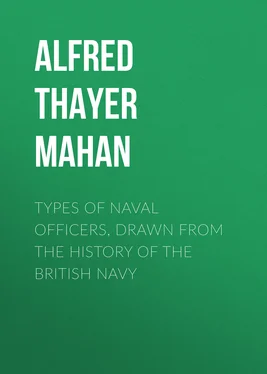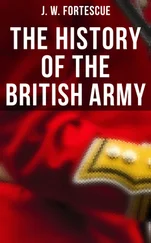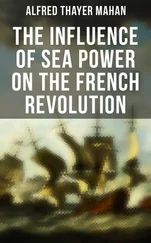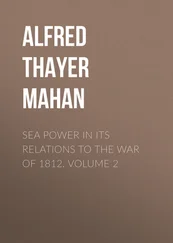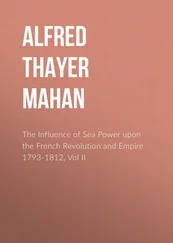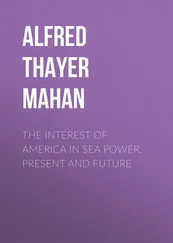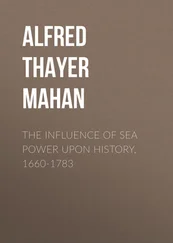Alfred Thayer Mahan - Types of Naval Officers, Drawn from the History of the British Navy
Здесь есть возможность читать онлайн «Alfred Thayer Mahan - Types of Naval Officers, Drawn from the History of the British Navy» — ознакомительный отрывок электронной книги совершенно бесплатно, а после прочтения отрывка купить полную версию. В некоторых случаях можно слушать аудио, скачать через торрент в формате fb2 и присутствует краткое содержание. Жанр: foreign_prose, История, foreign_edu, foreign_antique, на английском языке. Описание произведения, (предисловие) а так же отзывы посетителей доступны на портале библиотеки ЛибКат.
- Название:Types of Naval Officers, Drawn from the History of the British Navy
- Автор:
- Жанр:
- Год:неизвестен
- ISBN:нет данных
- Рейтинг книги:3 / 5. Голосов: 1
-
Избранное:Добавить в избранное
- Отзывы:
-
Ваша оценка:
- 60
- 1
- 2
- 3
- 4
- 5
Types of Naval Officers, Drawn from the History of the British Navy: краткое содержание, описание и аннотация
Предлагаем к чтению аннотацию, описание, краткое содержание или предисловие (зависит от того, что написал сам автор книги «Types of Naval Officers, Drawn from the History of the British Navy»). Если вы не нашли необходимую информацию о книге — напишите в комментариях, мы постараемся отыскать её.
Types of Naval Officers, Drawn from the History of the British Navy — читать онлайн ознакомительный отрывок
Ниже представлен текст книги, разбитый по страницам. Система сохранения места последней прочитанной страницы, позволяет с удобством читать онлайн бесплатно книгу «Types of Naval Officers, Drawn from the History of the British Navy», без необходимости каждый раз заново искать на чём Вы остановились. Поставьте закладку, и сможете в любой момент перейти на страницу, на которой закончили чтение.
Интервал:
Закладка:
They were both successful men, in the ordinary acceptation of the word success. They were great, not only in professional character, but in the results which do not always attend professional desert; they were great in achievement. Each name is indissolubly linked with a brilliant victory, as well as with other less known but equally meritorious actions; in all of which the personal factor of the principal agent, the distinctive qualities of the commander-in-chief, powerfully contributed and were conspicuously illustrated. These were, so to say, the examples, that enforced upon the men of their day the professional ideas by which the two admirals were themselves dominated, and upon which was forming a school, with professional standards of action and achievement destined to produce great effects.
Yet, while this is so, and while such emphatic demonstrations by deeds undoubtedly does more than any other teaching to influence contemporaries, and so to promote professional development, it is probably true that, as a matter of historical illustration, the advance of the eighteenth century in naval warfare is more clearly shown by two great failures, for neither of which were these officers responsible, and in one only of which in fact did either appear, even in a subordinate capacity. The now nearly forgotten miscarriage of Admiral Mathews off Toulon, in 1744, and the miserable incompetency of Byng, at Minorca, in 1756, remembered chiefly because of the consequent execution of the admiral, serve at least, historically, to mark the low extreme to which had then sunk professional theory and practice—for both were there involved. It is, however, not only as a point of departure from which to estimate progress that these battles—if they deserve the name—are historically useful. Considered as the plane to which exertion, once well directed and virile, had gradually declined through the prevalence of false ideals, they link the seventeenth century to the eighteenth, even as the thought and action—the theory and practice—of Hawke and Rodney uplifted the navy from the inefficiency of Mathews and Byng to the crowning glories of the Nile and Trafalgar, with which the nineteenth century opened. It is thus, as the very bottom of the wave, that those singular and signal failures have their own distinctive significance in the undulations of the onward movement. On the one hand they are not unaccountable, as though they, any more than the Nile and Trafalgar, were without antecedent of cause; and on the other they serve, as a background at least, to bring out the figures of the two admirals now before us, and to define their true historical import, as agents and as exponents, in the changes of their day.
It is, therefore, important to the comprehension of the changes effected in that period of transition, for which Hawke and Rodney stand, to recognize the distinctive lesson of each of these two abortive actions, which together may be said to fix the zero of the scale by which the progress of the eighteenth century is denoted. They have a relation to the past as well as to the future, standing far below the level of the one and of the other, through causes that can be assigned. Naval warfare in the past, in its origin and through long ages, had been waged with vessels moved by oars, which consequently, when conditions permitted engaging at all, could be handled with a scope and freedom not securable with the uncertain factor of the wind. The motive power of the sea, therefore, then resembled essentially that of the land,—being human muscle and staying power, in the legs on shore and in the arms at sea. Hence, movements by masses, by squadrons, and in any desired direction corresponding to a fixed plan, in order to concentrate, or to outflank,—all these could be attempted with a probability of success not predicable of the sailing ship. Nelson's remarkable order at Trafalgar, which may almost be said to have closed and sealed the record of the sail era, began by assuming the extreme improbability of being able at any given moment to move forty ships of his day in a fixed order upon an assigned plan. The galley admiral therefore wielded a weapon far more flexible and reliable, within the much narrower range of its activities, than his successor in the days of sail; and engagements between fleets of galleys accordingly reflected this condition, being marked not only by greater carnage, but by tactical combinations and audacity of execution, to which the sailing ship did not so readily lend itself.
When the field of naval warfare became extended beyond the Mediterranean,—for long centuries its principal scene,—the galley no longer met the more exacting nautical conditions; and the introduction of cannon, involving new problems of tactics and ship-building, accelerated its disappearance. The traditions of galley-fighting, however, remained, and were reinforced by the habits of land fighting,—the same men in fact commanding armies on shore and fleets at sea. In short, a period of transition ensued, marked, as such in their beginnings are apt to be, by an evident lack of clearness in men's appreciation of conditions, and of the path of development, with a consequent confusion of outline in their practice. It is not always easy to understand either what was done, or what was meant to be done, during that early sail era; but two things appear quite certainly. There is still shown the vehemence and determination of action which characterized galley fighting, visible constantly in the fierce effort to grapple the enemy, to break his ranks, to confuse and crush him; and further there is clear indication of tactical plan on the grand scale, broad in outline and combination, involving different—but not independent—action by the various great divisions of the fleet, each of which, in plan at least, has its own part, subordinate but contributory to the general whole.
The results, though not unimportant, were not satisfactory, for men were compelled to see that from various causes the huge numbers brought upon the field lapsed into confusion, and that battle, however well planned in large outline, resolved itself into a mere mass of warring units incoherently struggling one with another. There was lack of proportion between effort exerted and effect achieved. A period of systematization and organization set in. Unwieldy numbers were reduced to more manageable dimensions by excluding ships whose size and strength did not add to the efficiency of the order of battle; the powers and limitations of those which remained were studied, and certain simple tactical dispositions, fitted to particular emergencies, were recognized and adopted,—all tending to impart unity of movement and action, and to keep the whole in regulated order under the hand of the commander-in-chief, free from confusion.
To this point there was improvement; but reaction, as often, went too far. The change in accepted ideas is emphatically shown by a comparison of the Fighting Instructions of 1740 and 1756, when the crystallization of the system was complete but disintegration had not yet begun, with those issued in 1665 by the Duke of York, afterwards James II., at the beginning of the second of the three Anglo-Dutch Wars. His in turn are directly deducible from others framed shortly after the first war, in 1652-1654, when sail tactics had not passed the stage of infancy, and were still strongly affected by the galley tradition. There is here found, on the one hand, the prescription of the line of battle,—a single column of ships formed in each other's wake,—with the provision that if the enemy is to leeward, and awaits attack, the headmost squadron of the British shall steer for the headmost of the enemy's ships. This accords with the general tenor of the later Instructions; but there occurs elsewhere, and previously, the direction that, when the enemy is to windward, if the leading British Squadron finds it can weather any considerable part of them, it is to "tack and stand in, and strive to divide the enemy's body," and that, "being got to windward, is to bear down on those ships to leeward of them," which have thus been cut off.
Читать дальшеИнтервал:
Закладка:
Похожие книги на «Types of Naval Officers, Drawn from the History of the British Navy»
Представляем Вашему вниманию похожие книги на «Types of Naval Officers, Drawn from the History of the British Navy» списком для выбора. Мы отобрали схожую по названию и смыслу литературу в надежде предоставить читателям больше вариантов отыскать новые, интересные, ещё непрочитанные произведения.
Обсуждение, отзывы о книге «Types of Naval Officers, Drawn from the History of the British Navy» и просто собственные мнения читателей. Оставьте ваши комментарии, напишите, что Вы думаете о произведении, его смысле или главных героях. Укажите что конкретно понравилось, а что нет, и почему Вы так считаете.
